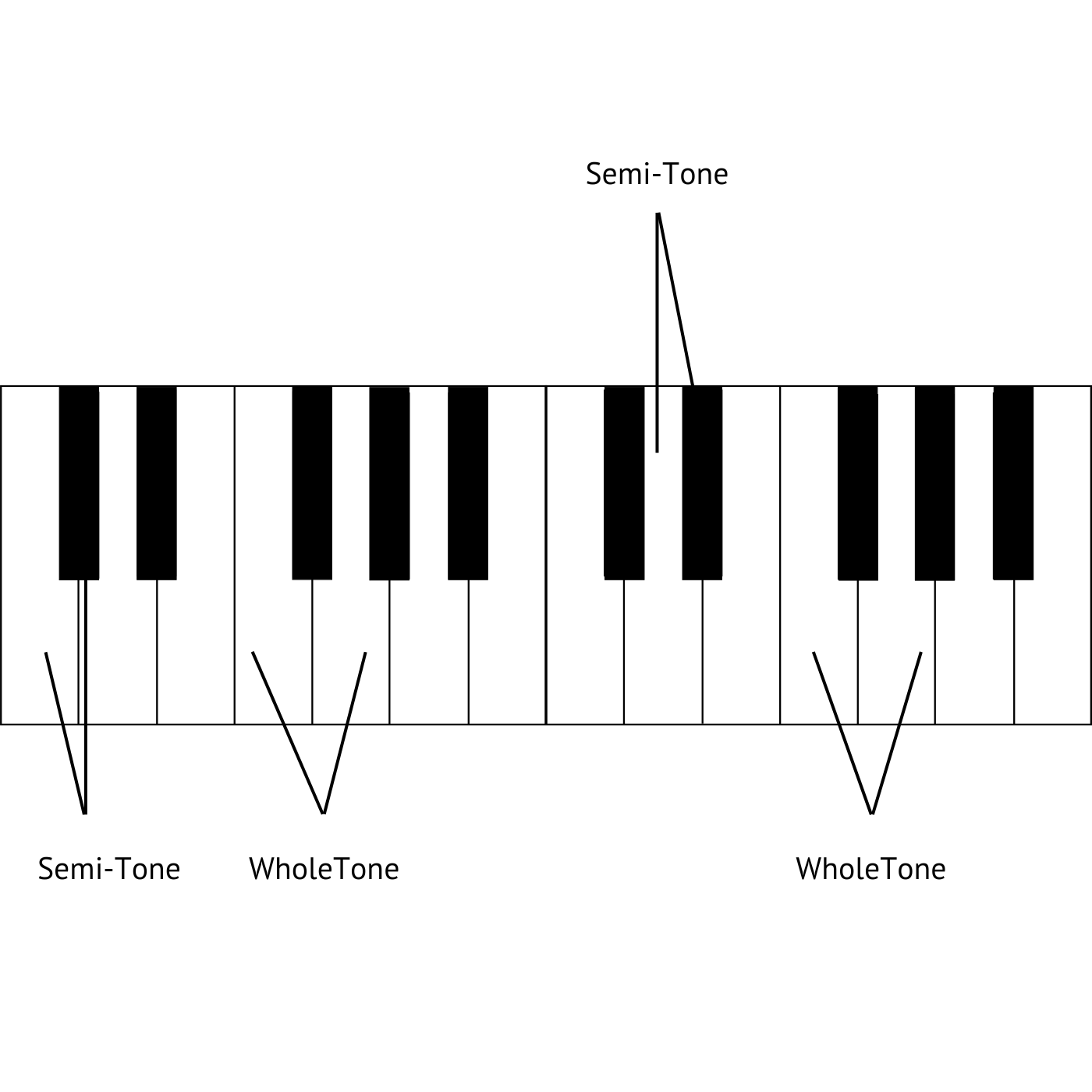Exploring Intervals, Tones, and Semi-Tones: Unlocking the Melodies of Music
Have you ever wondered how musicians effortlessly create captivating melodies that tug at your heartstrings or make your feet tap to the beat? The magic lies in their understanding of intervals, tones, and semi-tones. These fundamental concepts form the building blocks of music and play a crucial role in creating harmonious melodies. In this article, we'll embark on a journey to demystify these musical terms, helping you develop a deeper appreciation for the art of music.
Contents
Understanding Intervals:

Intervals are the spaces between two notes in music. They determine the distance, or pitch, between two tones. Picture a ladder with each rung representing a note. The distance between any two rungs is an interval. Whether it's a soothing lullaby or a vibrant symphony, intervals shape the mood and character of a musical piece.
Let's delve into some common intervals you might encounter:
- Unison: This interval occurs when two notes have the same pitch, giving a sense of unity and harmony.
- Octave: The distance between two notes that share the same letter name is called an octave. It produces a harmonious sound that is pleasing to the ear.
- Thirds: Thirds are intervals formed by skipping one note in between two successive notes. Major thirds create a happy and uplifting sound, while minor thirds evoke a sense of melancholy.
- Fifths: A fifth is an interval that spans five letter names. It has a strong and stable sound and is often associated with power and strength.
Exploring Tones and Semi-Tones:

To understand tones and semi-tones, imagine the musical alphabet consisting of A, B, C, D, E, F, and G. These letters represent the pitches used in music. A tone is the distance of two semi-tones or two consecutive letter names, while a semi-tone is the smallest interval in Western music, equivalent to one fret on a guitar or one key on a piano.
Why are tones and semi-tones significant? Well, they determine the scales we use in music, such as the major and minor scales. These scales define the tonality and mood of a piece, forming the foundation for melodies and harmonies.
Discover More with Music Teachers:
Now that we've explored the basics of intervals, tones, and semi-tones, you may be eager to dive deeper into the world of music theory. Whether you're a budding musician, a curious listener, or simply passionate about music, seeking guidance from music teachers who specialise in music theory can be invaluable.
At MusicTeachers.co.uk, you can find skilled music teachers who offer comprehensive lessons in music theory. Connect with experienced professionals who can guide you through the intricacies of intervals, tones, and beyond. They'll help you develop a solid foundation and enhance your understanding of music theory.
Further Reading:
To enhance your knowledge and gain a deeper understanding of intervals and tones, check out the blog articles available on MusicTeachers.co.uk. The "Guide to Intervals" provides valuable insights, practical examples, and tips to expand your musical horizons. Moreover, for those seeking to expand their knowledge even further, we highly recommend checking out our blog article on "A Guide to Ledger Lines" which will help you navigate the world of ledger lines, enabling you to read and interpret musical notation with ease. Finally, our Glossary of Musical Terms is a handy guide to everything you need to start your musical journey.
Conclusion:
Intervals, tones, and semi-tones are the secret ingredients that give music its enchanting appeal. By grasping these concepts, you'll uncover the underlying framework that musicians use to create captivating melodies. Remember, music theory is a vast and fascinating realm, and seeking guidance from music teachers who specialise in this field enhances your learning experience.
Why not download our theory worksheet sheet and test your knowledge:
Downloads
